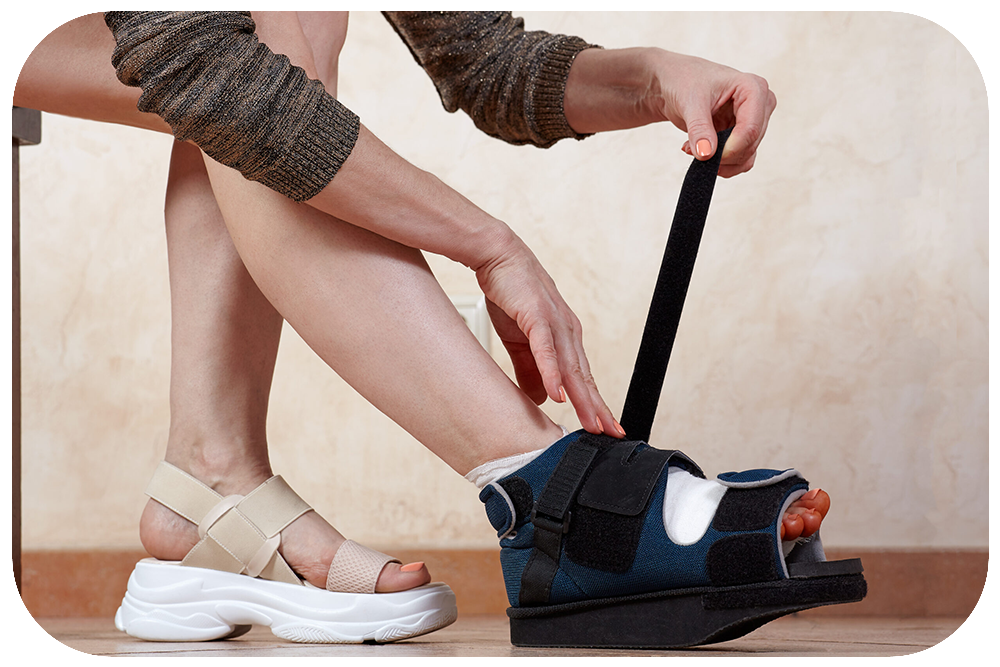
Minimally Invasive Bunion Surgery: The Future of Foot Care
If you’re struggling with the pain and discomfort of a bunion, you may have already looked into various treatment options. For many years, traditional bunion surgery was the only real solution, but it often came with significant downsides, such as long recovery times, visible scarring, and extended time off your feet. However, thanks to advancements in medical technology, there is now a better way to treat bunions—minimally invasive bunion surgery.
At The Bunion Cure, we are proud to be pioneers of this modern surgical approach that provides patients with long-lasting relief without the complications and inconveniences of traditional surgery. Our minimally invasive technique allows you to correct your bunion with smaller incisions, less pain, and a much quicker recovery time. Whether you’ve been living with bunion pain for years or you’re just beginning to experience discomfort, minimally invasive surgery can provide the relief you need while getting you back on your feet faster.
What is Minimally Invasive Bunion Surgery?
Minimally invasive bunion surgery is a cutting-edge procedure designed to correct bunions with minimal disruption to the surrounding tissues. Unlike traditional surgery, which often requires large incisions and extensive bone cutting, minimally invasive surgery uses small incisions and specialized instruments to realign the bones of your foot.
This approach minimizes trauma to the soft tissues and bones, resulting in less postoperative pain, swelling, and scarring. In most cases, patients can walk immediately after the procedure and return to their normal activities far sooner than they would with traditional surgery.
How Does Minimally Invasive Bunion Surgery Work?
At The Bunion Cure, our minimally invasive bunion surgery is performed through tiny incisions, typically less than 5 millimeters in size. Using advanced surgical tools, we are able to correct the misalignment of the bones in your foot without the need for large, invasive cuts. Here’s how the process works:
Because we use small incisions and a more targeted approach, there is less tissue disruption, which means your body has less to heal. The result is a faster, more comfortable recovery with significantly less downtime than traditional surgery.
Why Choose Minimally Invasive Bunion Surgery?
Minimally invasive bunion surgery offers numerous advantages over traditional procedures, making it the best option for patients who want effective results without a lengthy recovery. Learn more about some of the main benefits of choosing this advanced treatment:
Smaller Incisions and Minimal Scarring
One of the most noticeable benefits of minimally invasive surgery is the smaller incisions. Traditional bunion surgery often requires a large incision along the side of the foot, leaving patients with a significant scar. Minimally invasive surgery, on the other hand, uses tiny incisions that result in little to no visible scarring. This is especially important for those who are concerned about the cosmetic appearance of their feet.
Faster Recovery
Because the procedure involves less tissue damage and disruption, the recovery process is much quicker than with traditional surgery. Most patients can walk on their foot immediately following surgery, and many are able to return to their normal activities within just a few weeks. There’s no need for prolonged use of crutches, walkers, or other mobility aids, just a compact surgery shoe right after your procedure, making it easier to get back to your everyday life.
Less Pain and Swelling
Minimally invasive surgery is designed to be as gentle on your body as possible. By reducing the amount and size of incisions and tissue trauma, patients experience significantly less postoperative pain and swelling. This makes the recovery process more comfortable and allows for a quicker return to normal footwear and activities.
Immediate Weight-Bearing
Unlike traditional bunion surgery, which often requires patients to avoid putting weight on the foot for several weeks, minimally invasive bunion surgery allows for immediate weight-bearing. Most patients walk out of the surgery center and are able to drive themselves home with little to no pain, crutches, or a clunky, heavy boot.
High Success Rates
Minimally invasive bunion surgery has a high rate of success in correcting bunions and providing long-term pain relief. By addressing the underlying cause of the bunion (the misalignment of the bones), this procedure ensures that the problem is corrected at its source. Many patients experience lasting relief and improved foot function after undergoing minimally invasive surgery.
Who is a Candidate for Minimally Invasive Bunion Surgery?
Minimally invasive bunion surgery is a suitable option for many patients, but not everyone may be an ideal candidate. You may be a good candidate for this procedure if:
If you’re unsure whether minimally invasive bunion surgery is right for you, our team at The Bunion Cure will conduct a thorough evaluation during your consultation. We’ll discuss your symptoms, medical history, and treatment goals to determine the best approach for your situation.
What to Expect During Recovery
While minimally invasive bunion surgery offers a faster recovery than traditional methods, it’s still important to follow your surgeon’s post-op instructions to ensure a smooth healing process. Here’s what you can generally expect during recovery:
Our team will provide you with detailed aftercare instructions to ensure you’re back on your feet as quickly and comfortably as possible.








